Your cart is currently empty!
Search results for: “70”
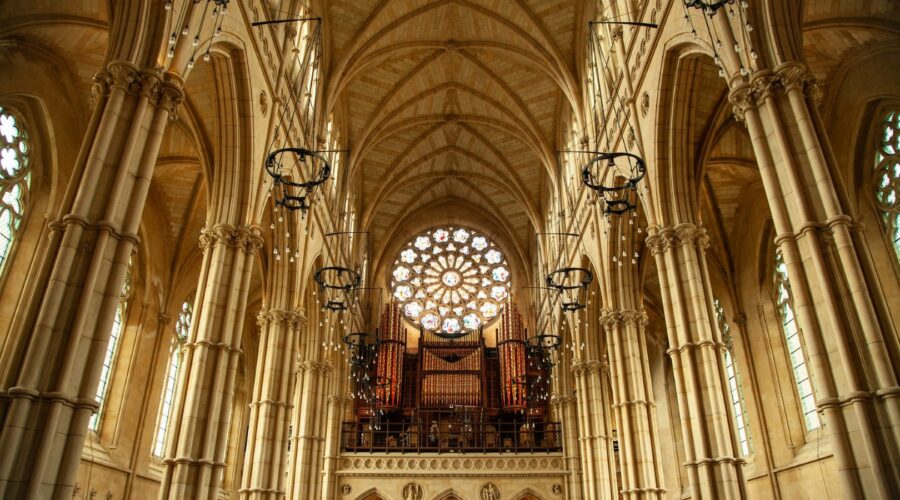
Unveiling the Splendor of La Sagrada Familia: A Masterpiece of Modern Architecture
Embark on a journey to explore one of the most iconic landmarks in the world: La Sagrada Familia, a masterpiece of Antoni Gaudí’s architectural genius. From its intricate façade to its soaring spires, this awe-inspiring basilica is a testament to Gaudí’s unwavering faith and architectural prowess.
History and Concept
An Ambitious Vision
La Sagrada Familia was conceived as a grand temple dedicated to the Holy Family – Jesus Christ, Mary, and Joseph – by a Catalan bookseller, Josep Maria Bocabella. In 1883, Gaudí took over the project, determined to create a “living” monument that would bring visitors closer to God.
Gaudí’s Integral Art
Gaudí’s vision extended beyond mere architecture. He believed in creating a holistic experience, encompassing every aspect of the building’s interior and exterior. His “Integral Art” approach merged architecture, sculpture, and nature, creating a harmonious symphony of artistic expression.
Architectural Features
Nativity and Passion Façades
The church boasts three magnificent façades: the Nativity Façade, the Passion Façade, and the yet-to-be-completed Glory Façade. The Nativity Façade, facing east, depicts the joyful birth of Christ, while the Passion Façade, facing west, portrays the suffering and crucifixion of Christ. Each façade is adorned with intricate carvings, vibrant mosaics, and symbolic sculptures.
Hyperbolic and Parabolic Vaults
La Sagrada Familia is renowned for its groundbreaking structural design. Gaudí utilized hyperbolic and parabolic vaults to achieve soaring heights and create an impression of vastness in the interior. These vaults mimic the bending and flexing of organic forms, giving the basilica an unparalleled lightness and grace.
Stained Glass Windows
Natural light plays a vital role in illuminating the basilica. Gaudí’s use of colorful stained glass windows filters light, creating a symphony of colors that dance across the interior. The windows depict Biblical scenes and symbols, enhancing the spiritual atmosphere of the space.
Symbolism and Spirituality
Nature as Inspiration
Gaudí was deeply inspired by nature, and this influence is evident throughout La Sagrada Familia. The multitude of columns resembling trees, the spiral staircases representing the DNA double helix, and the intricate carvings of flora and fauna all symbolize the unity and interconnectedness of creation.
Ascension of the Spirit
The towering spires of La Sagrada Familia soar upwards, symbolizing the ascent of the human spirit towards heaven. The central spire, dedicated to Jesus Christ, reaches a symbolic height of 170 meters, representing the Holy Family’s celestial abode.
A Living Temple
Gaudí intended La Sagrada Familia to be an ever-evolving “living temple” that would reflect the progressive nature of faith. The ongoing construction, spanning over a century, serves as a testament to the enduring legacy and universal appeal of Gaudí’s masterpiece.
Visiting La Sagrada Familia
Essential Information
Address: Carrer de Mallorca, 401, 08013 Barcelona, Spain
Opening Hours: Vary throughout the year, check official website for up-to-date information
Admission Fees: Admission fees apply, with various options available, including guided tours and skip-the-line accessTips for Visitors
- Book your tickets in advance, especially during peak season, to avoid long queues.
- Consider a guided tour to gain insights into the history, symbolism, and architectural details of the basilica.
- Allow ample time to explore both the interior and exterior of the building.
- Bring a camera to capture the stunning beauty of La Sagrada Familia from every angle.
- Dress respectfully, as it is a place of worship.
Conclusion
La Sagrada Familia stands as a testament to Antoni Gaudí’s genius and a symbol of Barcelona’s architectural heritage. Through its innovative design, captivating symbolism, and unwavering spirituality, this iconic basilica continues to inspire awe and admiration in visitors from around the world.
Whether you’re an architecture enthusiast, a spiritual seeker, or simply appreciate the beauty of human creativity, a visit to La Sagrada Familia is an unforgettable experience that will leave an enduring impression on your heart and soul.
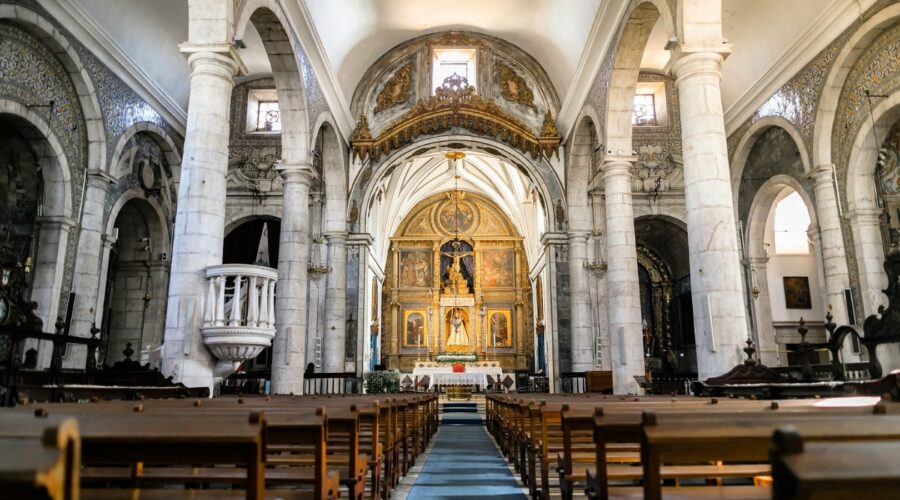
Awana: A Comprehensive Guide for Parents
Introduction
Awana is a global nonprofit children’s and youth ministry organization dedicated to the spiritual development of children through the power of Scripture. With over 1 million members in over 14,000 churches worldwide, Awana has been impacting lives for over 70 years.
What is Awana?
Awana is a weekly club program that meets during the school year. It is divided into four age-specific clubs:
- Cubbies (preschool)
- Sparks (K-2nd grade)
- Truth & Training (3rd-6th grade)
- Trek (7th-12th grade)
Each club focuses on a specific age group and has its curriculum, activities, and awards.
The Awana Philosophy
Awana’s philosophy is based on three core principles:
- Biblical Truth: Awana believes that the Bible is the authoritative Word of God and that it should be the foundation for all teaching and activities.
- Spiritual Transformation: Awana seeks to help children develop a personal relationship with Jesus Christ and grow in their spiritual lives.
- Outreach: Awana believes that every child can share the Gospel with others and that Awana can provide a platform for them to do so.
Benefits of Awana
There are many benefits to joining Awana, including:
- Spiritual Development: Awana provides a fun and engaging environment for children to learn about the Bible and grow in their faith.
- Character Building: Awana teaches children important life skills such as responsibility, self-discipline, and teamwork.
- Socialization: Awana provides a safe and supportive environment for children to make friends and build relationships.
- Leadership Development: Awana offers opportunities for children to develop leadership skills through various roles and responsibilities.
Finding an Awana Near You
To find an Awana near you, you can visit the Awana website. The website allows you to search for clubs by zip code, state, or country.
How to Get Involved
Once you have found an Awana near you, the next step is to get involved. Here are a few tips:
- Visit the club: Attend a club meeting to see what it is like and meet the leaders.
- Talk to your child: Ask your child if they are interested in joining Awana.
- Register your child: Once you have decided to join, you will need to register your child with the club.
Conclusion
Awana is a great way for children to grow in their faith, develop their character, and make friends. If you are looking for a children’s ministry program for your child, I encourage you to check out Awana.
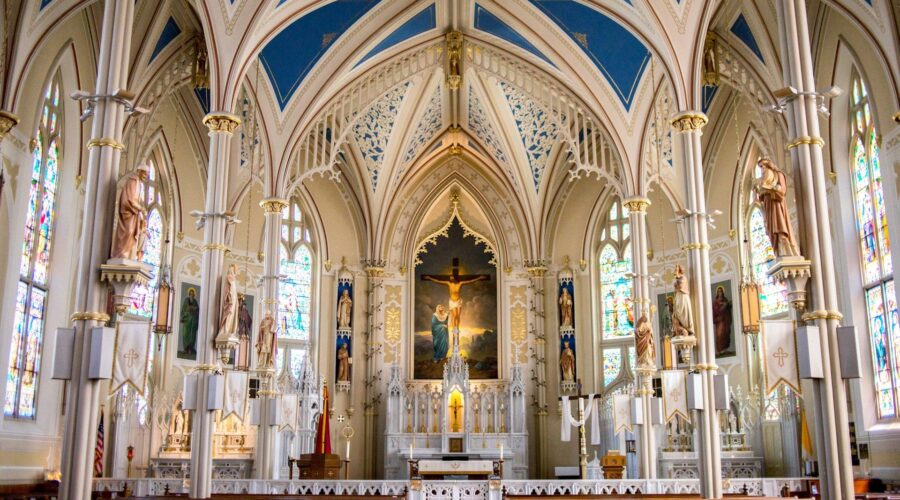
Discover the Riverside Church: A Historical and Spiritual Landmark in New York City
Nestled on the Upper West Side of Manhattan, Riverside Church stands as a beacon of architectural grandeur and spiritual significance. With its soaring Gothic spires and stunning stained-glass windows, the church has become a beloved landmark in New York City and a destination for tourists and pilgrims alike.
History and Architecture
Riverside Church was conceived in the early 20th century by a group of visionary philanthropists and clergy. The cornerstone was laid in 1927, and the building was completed in 1930. Designed by renowned architect Henry C. Pelton, the church is a masterpiece of Gothic Revival architecture.
Key Architectural Features
- Soaring nave with a height of 124 feet
- Twin bell towers reaching 392 feet
- Massive stained-glass windows depicting scenes from the Bible
- Imposing stone facade adorned with gargoyles and carvings
Religious Significance
Riverside Church is a vibrant and diverse interdenominational Christian congregation. It is affiliated with both the United Church of Christ and the American Baptist Churches USA.
The church’s mission is to promote interfaith dialogue, social justice, and peace. It hosts a wide range of religious services, including:
- Traditional Sunday worship
- Prayer services
- Bible study groups
- Youth programs
Community Engagement
Beyond its religious significance, Riverside Church plays a vital role in the surrounding community.
Social Justice Initiatives
- Advocacy for affordable housing
- Support for immigrant rights
- Work with homeless and low-income populations
Cultural and Educational Programs
- Concerts by renowned musicians and choirs
- Lectures and discussions on current affairs
- Exhibitions in the church’s art gallery
Visiting Riverside Church
Riverside Church welcomes visitors from all over the world.
Tours
- Guided tours are available during the week and on weekends.
- Tours cover the church’s history, architecture, and religious significance.
Services
- Sunday worship services are held at 11:00 AM and 8:00 PM.
- Weeknight services are held on Wednesdays at 7:00 PM.
Practical Information
- Address: 490 Riverside Drive, New York, NY 10027
- Phone: (212) 870-6700
- Website: https://www.riversidechurchny.org/
Conclusion
Riverside Church is a testament to the enduring power of faith, architecture, and community engagement. It is a place where people from all walks of life can come together to worship, learn, and inspire each other. Whether you are seeking spiritual guidance or simply admiring its architectural beauty, Riverside Church is a destination that will leave a lasting impression.
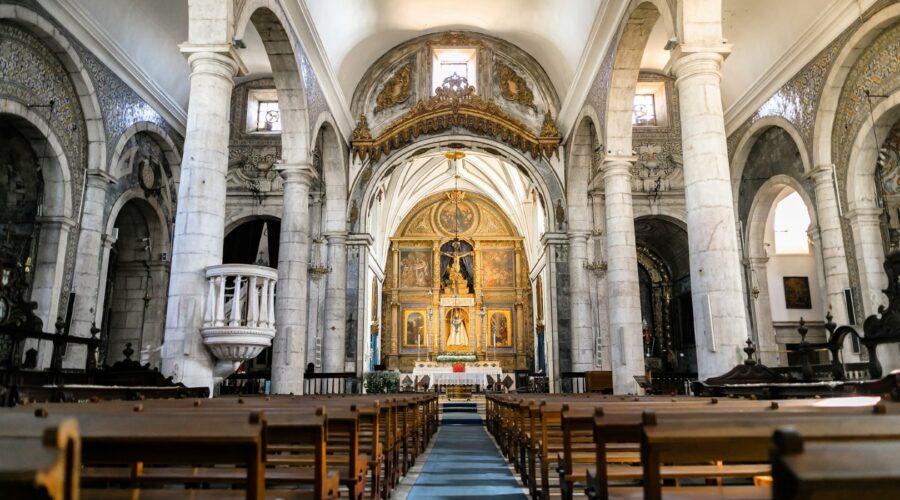
Unveiling the Splendors of the Sacré-Cœur Basilica: A Comprehensive Guide
Introduction
Nestled atop the bohemian heights of Montmartre, the Sacré-Cœur Basilica stands as a majestic symbol of the City of Lights, drawing millions of visitors each year. This magnificent edifice not only captivates with its architectural grandeur but also holds a profound spiritual significance in the heart of Paris.
History and Architecture
Conception and Construction
The Sacré-Cœur’s conception was sparked by a vow made during the Franco-Prussian War. In 1870, a group of devout Parisians promised to erect a church dedicated to the Sacred Heart of Jesus if the city was spared from invasion. After the war’s end, the construction of the basilica commenced in 1875 and spanned nearly 40 years.
Architectural Style
The basilica’s unique architectural style is an eclectic blend of Romanesque Revival, Byzantine Revival, and Art Deco influences. The white limestone facade, adorned with intricate carvings and mosaics, creates a striking contrast against the blue Parisian sky. The massive central dome, reaching a height of 83 meters, dominates the skyline and serves as a prominent landmark.
Interior Features
Nave and Apse
Stepping inside the Sacré-Cœur, visitors are greeted by an awe-inspiring nave. Towering stained glass windows depict scenes from the life of Christ, flooding the interior with vibrant hues. The apse, behind the main altar, is adorned with a spectacular mosaic depicting Christ’s Sacred Heart.
Mosaics and Frescoes
The basilica is renowned for its exquisite mosaics and frescoes. The largest mosaic, covering the entirety of the apse, was created by Luc-Olivier Merson and depicts Christ’s mission to Redeem humanity. Other notable mosaics depict the Passion, Resurrection, and Ascension of Christ.
Crypt
Beneath the main basilica lies a vast crypt. It houses the remains of Marius-Victor Guillon, the architect who dedicated his life to the construction of the Sacré-Cœur, as well as other notable figures associated with the church.
Pilgrimage and Worship
Sacred Heart Devotion
The Sacré-Cœur has become a prominent pilgrimage site for Catholics worldwide. Pilgrims come to venerate the relics of Saint Margaret Mary Alacoque, who promoted devotion to the Sacred Heart. The basilica also hosts regular masses, prayer services, and confessions.
Blessing of Paris
Every evening, the Sacré-Cœur’s bells ring out to bless Paris. This tradition began in 1885 and has continued ever since, symbolizing the basilica’s role as a spiritual protector of the city.
Visitor Information
Admission and Hours
The Sacré-Cœur is open to visitors daily, with free admission to the basilica. Guided tours are available for a fee.
Transportation
The basilica is accessible by metro (Lines 2 and 12) or by bus (Lines 30, 31, 54, and 80).
Nearby Attractions
The Sacré-Cœur is situated in the vibrant neighborhood of Montmartre. Visitors can explore the streets, browse local markets, and visit other landmarks such as the Musée de Montmartre and the Lapin Agile cabaret.
Tips for Visiting
* Arrive early to avoid crowds, especially during peak tourist season.
* Dress respectfully, as the basilica is a place of worship.
* Take time to admire the intricate details of the architecture and artwork.
* Stay for the evening blessing of Paris for a truly atmospheric experience.
* Consider visiting the crypt to learn more about the history of the basilica and its architects.Conclusion
The Sacré-Cœur Basilica stands as a testament to the faith and devotion of the Parisian people. Its architectural splendor, inspiring mosaics, and pilgrimage significance make it an unmissable destination for visitors seeking spiritual and artistic enrichment. By exploring the depths of this magnificent edifice, one can gain a deeper understanding of Paris’s rich history and cultural legacy.
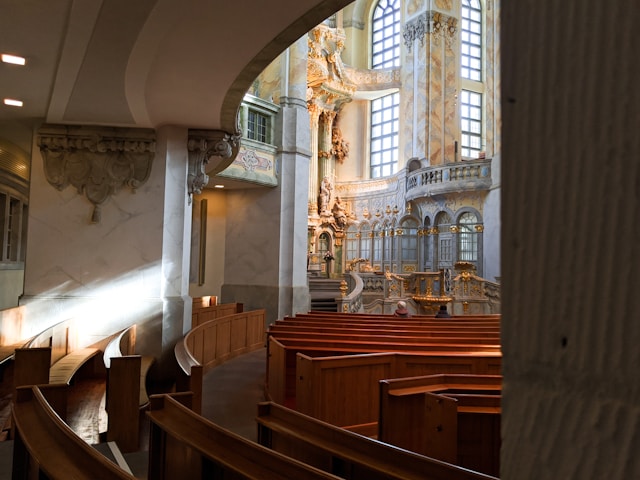
Salvation Ministries Live: A Comprehensive Guide
About Salvation Ministries Live
Salvation Ministries Live is a Christian television network based in Port Harcourt, Nigeria. It is owned and operated by Salvation Ministries, a Pentecostal church founded by Pastor David Ibiyeomie. The network broadcasts live services, sermons, and other religious programs 24 hours a day.
Salvation Ministries Live has a global reach, with viewers in over 100 countries. The network’s mission is to spread the gospel of Jesus Christ and to provide spiritual guidance and encouragement to believers around the world.
What to Expect
If you tune into Salvation Ministries Live, you can expect to see a variety of programs, including:
- Live services
- Sermons
- Bible studies
- Prayer meetings
- Gospel music
- Testimonies
- Interviews
- Documentaries
The network’s programming is designed to appeal to a wide range of viewers, from new believers to seasoned Christians. There is something for everyone at Salvation Ministries Live.
How to Watch
You can watch Salvation Ministries Live in several ways:
- On TV: The network is available on a variety of satellite and cable providers around the world.
- Online: You can watch Salvation Ministries Live online at https://www.smhos.org/live-tv/.
- Mobile: You can watch Salvation Ministries Live on your mobile device by downloading the network’s app from the App Store or Google Play.
Benefits of Watching
There are many benefits to watching Salvation Ministries Live. Some of the benefits include:
- You can be encouraged and inspired by the teachings of Pastor David Ibiyeomie.
- You can grow in your faith by watching Bible studies and sermons.
- You can be prayed for and receive spiritual guidance.
- You can connect with other Christians from around the world.
- You can be entertained by gospel music and testimonies.
Conclusion
Salvation Ministries Live is a valuable resource for Christians around the world. The network provides a variety of programs that can help you grow in your faith, be encouraged and inspired, and connect with other Christians. If you are looking for a way to deepen your relationship with God, I encourage you to watch Salvation Ministries Live.
Frequently Asked Questions
Here are some frequently asked questions about Salvation Ministries Live:
What time is the live service?
The live service is on every Sunday at 9:00 AM (WAT).
How can I contact Salvation Ministries Live?
You can contact Salvation Ministries Live by email at [email protected] or by phone at +234 84 700 700.
Is Salvation Ministries Live available in my country?
Salvation Ministries Live is available in over 100 countries around the world. You can check the network’s website to see if it is available in your country.
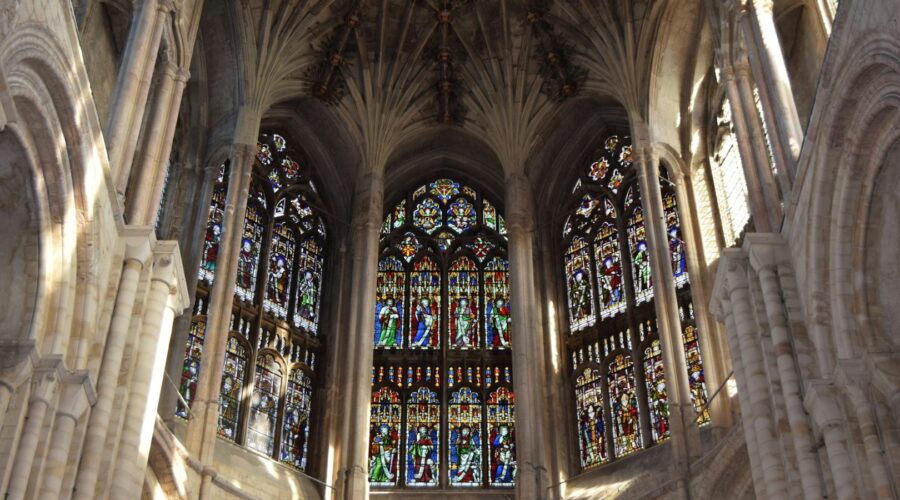
Unveiling the Word of Faith Church: A Comprehensive Guide
Introduction
The Word of Faith movement, a branch of charismatic Christianity, has garnered attention for its distinct doctrines and practices. This comprehensive guide delves into the core beliefs, history, and controversies surrounding the Word of Faith Church, enabling readers to gain a multifaceted understanding of this religious movement.
Core Beliefs
Positive Confession
Word of Faith churches emphasize the power of positive confession, believing that spoken words have the ability to shape reality. Members are encouraged to declare positive affirmations about their health, finances, and relationships.
Faith Healing
Faith healing is a central aspect of the Word of Faith movement. Believers trust in God’s ability to miraculously heal illnesses and diseases through prayer and the laying on of hands.
Prosperity Gospel
Many Word of Faith churches promote the prosperity gospel, which teaches that God desires his followers to be wealthy and successful. They believe that by giving generously and exercising faith, believers can unlock God’s blessings.
History
The Word of Faith movement originated in the early 20th century, with roots in the Pentecostal and charismatic movements. Key figures include Kenneth Hagin, Kenneth Copeland, and Oral Roberts.
In the 1970s and 1980s, the Word of Faith Church gained significant popularity through television ministries and conferences. Today, it has a global presence with millions of followers.
Controversies
Financial Abuse
Some Word of Faith churches have been accused of financial abuse, with leaders pressuring members to donate large sums of money.
False Teachings
Critics argue that the Word of Faith movement promotes false teachings, such as the idea that believers can control God’s will through their words and actions.
Health Risks
The emphasis on faith healing has raised concerns about the potential health risks associated with discouraging believers from seeking medical attention.
Assessment
Positive Aspects
- Emphasis on faith and positive thinking
- Focus on personal transformation
- Community and support network
Negative Aspects
- Potential for financial exploitation
- Promotion of unbiblical teachings
- Discouragement of medical care
Tips for Evaluating Word of Faith Churches
- Research the church’s beliefs and practices
- Attend services to observe their teachings
- Seek biblical guidance and the opinions of trusted pastors
- Be wary of churches that pressure you into giving large sums of money
- Remember that true faith is not based on material wealth or personal achievements
Conclusion
The Word of Faith Church presents a complex and multifaceted movement. While it offers potential for faith and transformation, it is important to approach it with discernment and caution. By understanding its core beliefs, history, and controversies, individuals can make informed decisions about their involvement in this religious movement.
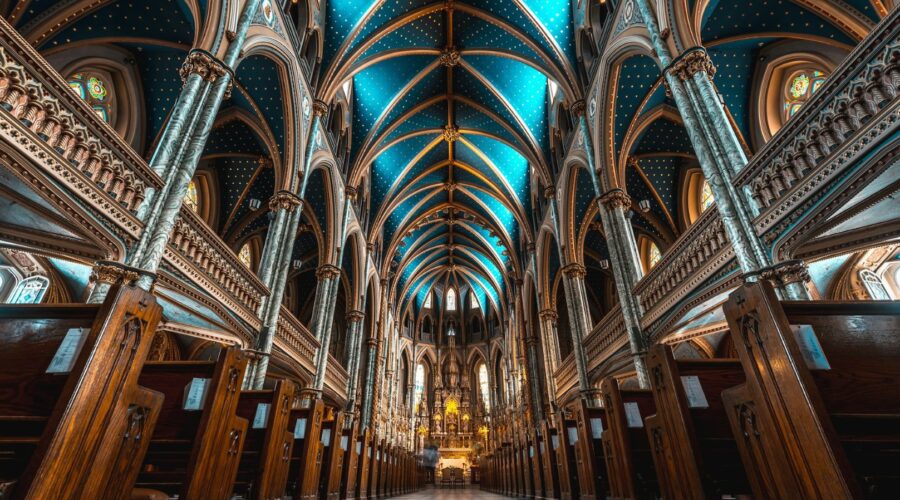
Discover the Splendors of the Sacred Heart Church: A Comprehensive Guide
A Beacon of Faith and Architectural Marvel
Nestled amidst the vibrant tapestry of Barcelona, Spain, the Sacred Heart Church stands as a testament to the grandeur of Gothic Revival architecture. Conceived by the renowned architect Antoni Gaudí, this awe-inspiring basilica is a culmination of his visionary artistry and a profound symbol of faith.
Historical Context
The inception of the Sacred Heart Church can be traced back to 1874, when the Josep Maria Bocabella, a fervent Catholic, purchased a plot of land on the outskirts of Barcelona with the intention of erecting a temple dedicated to the Sacred Heart of Jesus. Gaudí was entrusted with the architectural design in 1883, embarking on a project that would span four decades and become one of his most enduring masterpieces.
Architectural Prowess
The Sacred Heart Church is a symphony of architectural brilliance, showcasing Gaudí’s signature style that seamlessly blends Gothic, Art Nouveau, and Modernista elements. The majestic façade is adorned with intricate carvings, vibrant mosaics, and soaring spires, creating an ethereal presence that captivates all who behold it.
Façade
The façade of the Sacred Heart Church is divided into three distinct sections, each representing a stage in the life of Christ. The lower section, known as the Nativity Façade, depicts the birth and early life of Jesus. The central section, the Passion Façade, portrays scenes from his crucifixion, death, and resurrection. The upper section, the Glory Façade, celebrates the ascension of Christ and the triumph of the Catholic Church.
Towers and Spires
The Sacred Heart Church boasts a total of eighteen towers and spires, each meticulously designed to convey a specific religious symbolism. The central tower, known as the Tower of Jesus Christ, reaches a height of 170 meters and is adorned with a gilded statue of Christ holding a cross. The twelve apostles are represented by the remaining towers, while the four evangelists are symbolized by the pinnacles on each corner of the church.
Interior
The interior of the Sacred Heart Church is a testament to Gaudí’s genius for creating spaces that inspire both awe and introspection. The nave is a vast and soaring space, supported by slender columns that resemble trees, creating a serene and otherworldly atmosphere. The stained-glass windows, designed by Joan Vila-Grau and crafted by Josep Maria Jujol, bathe the interior in a kaleidoscope of colors.
Crypt
Beneath the main altar of the Sacred Heart Church lies the crypt, where the remains of Antoni Gaudí rest. The crypt is a somber and reflective space, adorned with sculptures and mosaics that pay homage to the architect’s life and work.
Symbolism and Inspiration
The Sacred Heart Church is a profound manifestation of Gaudí’s faith and his unwavering belief in the power of architecture to uplift and inspire. The basilica is replete with religious symbolism, from the intricate carvings depicting biblical scenes to the ingenious use of light and color.
The Sacred Heart of Jesus
The central theme of the Sacred Heart Church is the devotion to the Sacred Heart of Jesus, a symbol of divine love and compassion. The basilica is dedicated to the worship and veneration of this sacred symbol, and many of its architectural elements are designed to evoke the heart of Christ.
Light and Color
Gaudí masterfully employed light and color to create an immersive and awe-inspiring experience within the Sacred Heart Church. The stained-glass windows, mosaics, and painted ceilings emit a symphony of colors that shift and dance with the changing light throughout the day. This play of light and color is intended to symbolize the divine presence and the transformative power of faith.
Nature and Symbolism
Gaudí’s profound love for nature is evident throughout the Sacred Heart Church. The columns resemble trees, the stained-glass windows evoke the colors of flowers, and the mosaics depict scenes from the natural world. This integration of nature into the church’s design serves as a reminder of the interconnectedness of all living things and the sacredness of creation.
Visiting the Sacred Heart Church
The Sacred Heart Church is a must-see destination for visitors to Barcelona. Here are some tips for planning your visit:
* Book Tickets in Advance: Due to its immense popularity, it is highly recommended to book tickets online in advance to secure your preferred visiting time.
* Guided Tours: Guided tours are available in multiple languages and provide an in-depth exploration of the church’s history, architecture, and symbolism.
* Appropriate Attire: As a place of worship, it is customary to dress respectfully when visiting the Sacred Heart Church. Revealing or casual clothing is discouraged.
* Photography: Photography is generally permitted within the church, but it is important to be mindful of other visitors and to avoid using flash.
* Accessibility: The Sacred Heart Church is accessible to visitors with disabilities. Wheelchair ramps and elevators are available throughout the building.Conclusion
The Sacred Heart Church is a masterpiece of modern architecture, a symbol of faith, and a testament to the boundless creativity of Antoni Gaudí. Its grandeur, symbolism, and spiritual significance continue to captivate and inspire visitors from around the globe. Whether you are a devout Catholic, an architecture enthusiast, or simply a traveler seeking a truly awe-inspiring experience, the Sacred Heart Church is an unforgettable destination that will leave an enduring impression on your heart and soul.
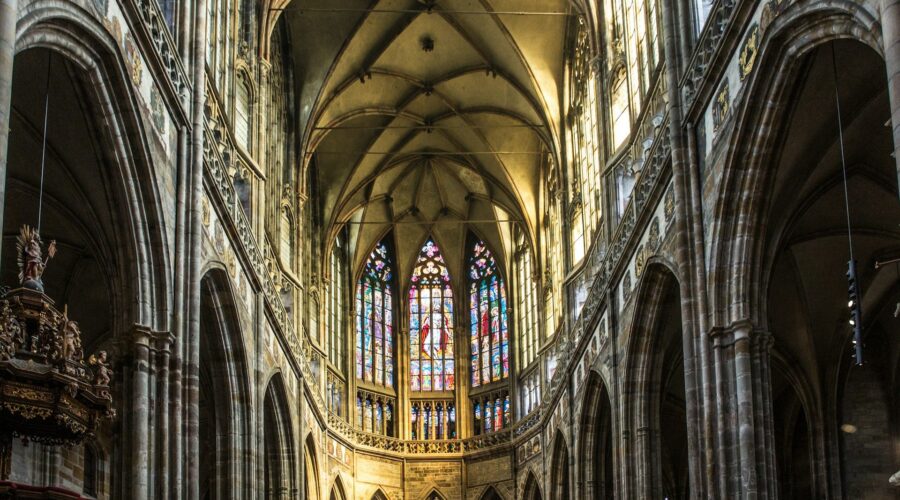
Discover the Significance and History of the San Damiano Cross
Origins and History
The San Damiano cross is a renowned medieval crucifix that is believed to have played a crucial role in the spiritual awakening of Saint Francis of Assisi. According to legend, in 1205, while praying in the dilapidated San Damiano church near Assisi, Francis heard a voice coming from the cross, urging him to “rebuild my house.” This experience profoundly transformed Francis’s life and set him on the path to founding the Franciscan Order.
Description and Features
The San Damiano cross is a testament to the artistic style and craftsmanship of the early 13th century. It is a large, wooden crucifix, measuring approximately 170 centimeters in height and 120 centimeters in width. The cross features a painted image of Jesus Christ, depicted in a traditional iconographic style.
Key Elements of the San Damiano Cross
- Painted Jesus Figure: The central figure is depicted as a crucified Jesus with a serene expression and outstretched arms.
- Byzantine Influences: The cross exhibits Byzantine influences, evident in the elongated limbs and expressive eyes of the Jesus figure.
- Inscriptions: The cross contains Latin inscriptions, including the words “IHS XPS” (an abbreviation of “Jesus Christ”) above Jesus’ head.
- Surrounding Figures: The cross is adorned with painted figures representing Mary, John the Evangelist, Francis of Assisi, and other saints.
Significance and Impact
The San Damiano cross holds immense spiritual and historical significance for the Franciscan movement. It is considered a symbol of:
Francis’s Spiritual Awakening
The cross is believed to have been the catalyst for Francis of Assisi’s spiritual transformation, inspiring him to embrace a life of poverty and service.
Franciscan Spirituality
The San Damiano cross became an iconic symbol representing the Franciscan emphasis on simplicity, humility, and love for creation.
Artistic Inspiration
The cross’s unique artistic style and iconography have influenced countless works of art and religious objects throughout history.
Current Location and Preservation
Today, the San Damiano cross is housed in the Basilica of San Damiano in Assisi, Italy. The cross has undergone extensive restoration efforts to preserve its historical and artistic integrity. It remains a popular pilgrimage site for those seeking inspiration and connection with the Franciscan tradition.
Conclusion
The San Damiano cross is a remarkable historical and spiritual artifact that has played a pivotal role in the life of Saint Francis of Assisi and the development of the Franciscan Order. Its unique iconography and profound significance continue to inspire and captivate believers worldwide.
Frequently Asked Questions (FAQs)
Q: Who painted the San Damiano cross?
A: The artist who painted the cross remains unknown.
Q: What is the significance of the IHS XPS inscription?
A: IHS XPS is a medieval Latin abbreviation for “Jesus Christ,” symbolizing Jesus’s presence on the cross.
Q: Can I visit the San Damiano cross today?
A: Yes, the San Damiano cross is located in the Basilica of San Damiano in Assisi, Italy, and is open to the public for visitation.

La Sagrada Família: A Masterpiece of Modernist Architecture
The Sagrada Família is an iconic basilica in Barcelona, Spain, designed by the renowned Catalan architect Antoni Gaudí. It is a masterpiece of Modernist architecture and one of Barcelona’s most popular tourist destinations.
A Brief History of the Sagrada Família
Construction of the Sagrada Família began in 1882. Gaudí took over as chief architect in 1883 and dedicated the rest of his life to the project. He died in 1926, leaving the basilica incomplete. Construction has continued since then, and it is expected to be completed by 2026.
Architectural Style and Features
The Sagrada Família is an eclectic mix of architectural styles, including Gothic, Art Nouveau, and Modernism. The basilica is characterized by its intricate facades, soaring spires, and colorful stained glass windows.
The Facades
The Sagrada Família has three facades: the Nativity Facade, the Passion Facade, and the Glory Facade. The Nativity Facade, completed in 1894, is decorated with scenes from the birth of Jesus. The Passion Facade, completed in 1954, depicts the Passion of Christ. The Glory Facade, still under construction, will depict the Second Coming of Christ and the Last Judgment.
The Spires
The Sagrada Família is topped by 18 spires. The central spire, dedicated to Jesus Christ, will be 170 meters tall when completed. The other spires represent the apostles, evangelists, and the Virgin Mary.
The Stained Glass Windows
The Sagrada Família’s stained glass windows are a masterpiece of color and light. The windows depict scenes from the life of Jesus and the saints. The use of colored glass creates a unique and ethereal atmosphere inside the basilica.
Visiting the Sagrada Família
The Sagrada Família is a popular tourist destination, and it is recommended to book tickets in advance. The basilica is open daily, and guided tours are available. Visitors can explore the basilica’s interior, climb the towers for panoramic views of Barcelona, and visit the museum dedicated to Gaudí’s work.
Conclusion
The Sagrada Família is a testament to the genius of Antoni Gaudí and a masterpiece of Modernist architecture. It is a must-see for anyone visiting Barcelona. Whether you are interested in architecture, art, or religion, you will be amazed by the beauty and grandeur of this iconic basilica.
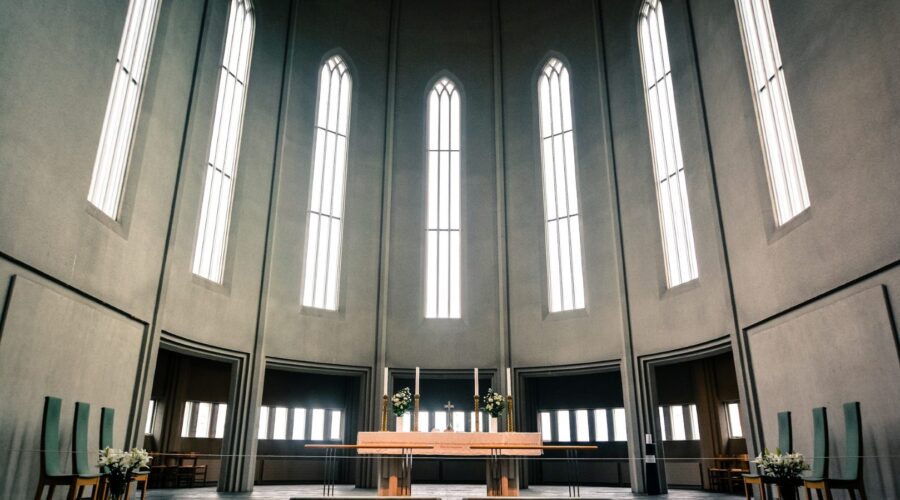
Presbyterian Church: A Comprehensive Guide for Understanding Its History, Beliefs, and Practices
Introduction
Presbyterianism is a Protestant Christian tradition that traces its roots back to the Reformation in the 16th century. It is characterized by its emphasis on representative government, its emphasis on the sovereignty of God, and its focus on the importance of education.
History of the Presbyterian Church
The Presbyterian Church was founded in Scotland in 1560 by John Knox, a prominent Protestant reformer. Knox had been influenced by the teachings of John Calvin, another prominent Protestant reformer, and the Presbyterian Church adopted many of Calvin’s beliefs.
- 1560: John Knox founds the Presbyterian Church in Scotland.
- 1643: The Westminster Assembly of Divines is held in London, England. The assembly produces the Westminster Confession of Faith, which becomes the doctrinal standard for many Presbyterian churches.
- 1706: The Act of Union is passed in Scotland, which unites the Presbyterian Church of Scotland with the Church of Scotland.
- 1789: The Presbyterian Church in the United States of America is founded.
- 1861-1865: The American Civil War divides the Presbyterian Church in the United States of America into two separate denominations: the Presbyterian Church in the United States of America (PCUSA) and the Presbyterian Church in the Confederate States of America (PCSA).
- 1983: The PCUSA and the PCSA reunite to form the Presbyterian Church (U.S.A.).
Beliefs of the Presbyterian Church
The Presbyterian Church holds to a number of core beliefs, including:
- The sovereignty of God: Presbyterians believe that God is sovereign over all things, and that he has created the world and everything in it for his own purposes.
- The authority of Scripture: Presbyterians believe that the Bible is the inspired word of God, and that it is the final authority for all matters of faith and practice.
- The priesthood of all believers: Presbyterians believe that all Christians are called to be priests before God, and that they have equal access to God through Jesus Christ.
- The importance of education: Presbyterians believe that education is essential for the growth of the Christian faith, and they have a long history of supporting educational institutions.
Practices of the Presbyterian Church
The Presbyterian Church has a number of distinctive practices, including:
- Representative government: Presbyterian churches are governed by representative assemblies, which are elected by the members of the congregation. These assemblies make decisions on behalf of the congregation, and they are responsible for overseeing the church’s finances, hiring staff, and setting policy.
- Liturgical worship: Presbyterian worship services are typically liturgical, which means that they follow a set order of worship. This order of worship includes readings from the Bible, prayers, and hymns.
- The sacraments: Presbyterians recognize two sacraments: baptism and the Lord’s Supper. Baptism is a sacrament of initiation, and it is typically administered to infants. The Lord’s Supper is a sacrament of remembrance, and it is typically administered on a weekly basis.
- Confirmation: Confirmation is a rite of passage that is typically administered to teenagers and young adults. Confirmation is a time for young people to affirm their faith and to make a commitment to the Presbyterian Church.
- Ordination: Ordination is a rite of passage that is typically administered to men and women who are called to serve as ministers in the Presbyterian Church. Ordination is a time for ministers to affirm their faith and to make a commitment to the Presbyterian Church.
Conclusion
The Presbyterian Church is a diverse and vibrant Christian tradition that has a long and rich history. Presbyterians are committed to the sovereignty of God, the authority of Scripture, the priesthood of all believers, and the importance of education. They practice representative government, liturgical worship, and the sacraments of baptism and the Lord’s Supper. The Presbyterian Church is a welcoming and inclusive community that is committed to serving God and others.
Frequently Asked Questions
What is the difference between a Presbyterian and a Methodist?
Presbyterians and Methodists are both Protestant Christian denominations, but there are some key differences between the two. Presbyterians emphasize representative government, the sovereignty of God, and the importance of education. Methodists emphasize the importance of personal experience, the role of the Holy Spirit, and the importance of evangelism.
What is the difference between a Presbyterian and a Congregationalist?
Presbyterians and Congregationalists are both Protestant Christian denominations that emphasize the importance of representative government. However, Presbyterians believe that the church is a universal body, while Congregationalists believe that the church is a local body. Presbyterians also have a more formal liturgy than Congregationalists.
What is the difference between a Presbyterian and a Baptist?
Presbyterians and Baptists are both Protestant Christian denominations that emphasize the importance of the Bible. However, Presbyterians believe that the Bible is the final authority for all matters of faith and practice, while Baptists believe that the Bible is the final authority for matters of faith but not for matters of practice. Presbyterians also have a more formal liturgy than Baptists.
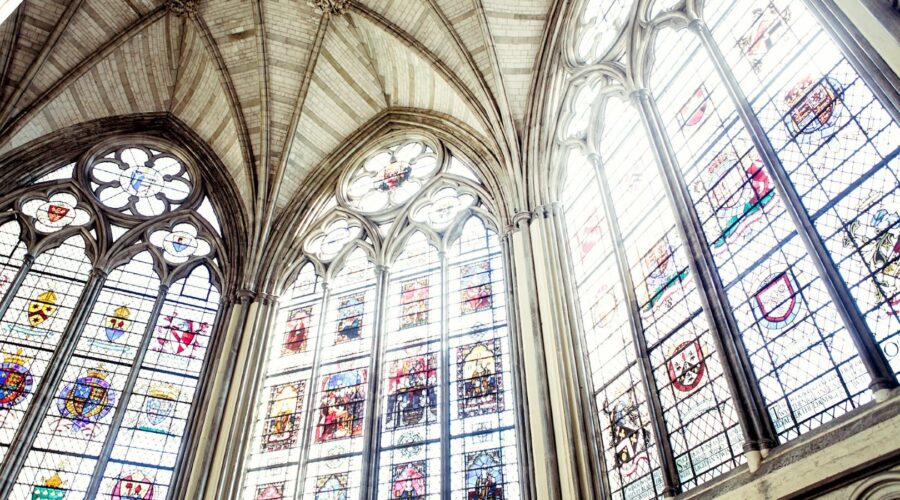
First Presbyterian Church: A Comprehensive Guide
Introduction
The First Presbyterian Church holds a significant place in the annals of Christianity, embodying a rich history, unwavering faith, and a commitment to serving its congregation and community. As the first Presbyterian congregation established in the United States, it has played a pivotal role in shaping the religious landscape of the nation. This comprehensive guide delves into the history, beliefs, mission, and various aspects of the First Presbyterian Church, providing valuable insights into its impact and enduring legacy.
Historical Context
Foundation and Early Years
The First Presbyterian Church was established in Philadelphia, Pennsylvania, in 1697 by a group of Scottish Presbyterians led by the Reverend George Keith. These settlers sought to establish a congregation that adhered to the beliefs and practices of the Presbyterian Church of Scotland. The church initially met in a private home before constructing its first building in 1704 on Arch Street.
Growth and Expansion
In the 18th century, the church experienced significant growth and expansion. Under the leadership of prominent pastors such as Gilbert Tennent and John Witherspoon, the congregation expanded its reach and influence. Tennent’s fiery sermons contributed to the Great Awakening, a religious revival that swept through the American colonies.
Revolutionary Era
During the American Revolution, the First Presbyterian Church played a pivotal role. John Witherspoon, a signer of the Declaration of Independence and a delegate to the Continental Congress, used his oratorical skills to advocate for American independence. The church also served as a meeting place for the Continental Congress.
Beliefs and Practices
Presbyterian Theology
The First Presbyterian Church adheres to the Westminster Confession of Faith and the Westminster Catechisms, which define the core beliefs of Presbyterianism. These documents emphasize the sovereignty of God, the depravity of humanity, and the atoning sacrifice of Jesus Christ. The church also embraces the principle of representative government, with elders and deacons elected by the congregation to oversee its affairs.
Worship Services
Worship services at the First Presbyterian Church are characterized by a blend of traditional and contemporary elements. The liturgy includes hymns, prayers, Scripture readings, and sermons. The church also incorporates multimedia elements and contemporary worship songs into its services.
Sacraments
The church observes two sacraments: baptism and the Lord’s Supper. Baptism is administered to infants and adults as a sign of God’s grace and forgiveness. The Lord’s Supper, also known as communion, is a remembrance of Jesus’ sacrifice and a symbol of unity among believers.
Mission and Outreach
Community Involvement
The First Presbyterian Church is deeply committed to serving its community. It operates a variety of outreach programs, including a food pantry, a homeless shelter, and a job training program. The church also partners with other organizations to address social issues such as poverty, homelessness, and addiction.
Global Missions
The church supports mission work around the world through partnerships with Presbyterian missionaries and organizations. These efforts focus on evangelism, education, and healthcare, seeking to spread the gospel and make a positive impact on communities in need.
Architecture and Historical Significance
The First Presbyterian Church is housed in a beautiful and historically significant building at 201 South Third Street in Philadelphia. The current structure, completed in 1855, is an example of Gothic Revival architecture and is listed on the National Register of Historic Places.
Notable features of the building include its high vaulted ceilings, stained glass windows, and intricate woodwork. The church’s sanctuary is particularly impressive, with its grand pulpit and elaborate organ. The building has undergone several renovations over the years, but it retains its original charm and grandeur.
Conclusion
The First Presbyterian Church stands as a testament to the enduring power of faith and the transformative impact of the Christian message. Throughout its long history, the church has remained a beacon of hope and a catalyst for positive change in Philadelphia and beyond. Its commitment to biblical teaching, community service, and global missions continues to inspire and motivate generations of believers.
As the first Presbyterian congregation established in the United States, the First Presbyterian Church holds a special place in the hearts of Presbyterians and Christians alike. Its legacy of faith, service, and architectural beauty is a source of pride for the congregation and a valuable asset to the city of Philadelphia.
FAQs
Q: What is the address of the First Presbyterian Church?
A: 201 South Third Street, Philadelphia, PA 19106
Q: When were the current building and sanctuary completed?
A: 1855
Q: What are the core beliefs of the Presbyterian Church?
A: Sovereignty of God, depravity of humanity, atoning sacrifice of Jesus Christ
Q: What types of outreach programs does the church operate?
A: Food pantry, homeless shelter, job training program
Q: Is the church building listed on the National Register of Historic Places?
A: Yes
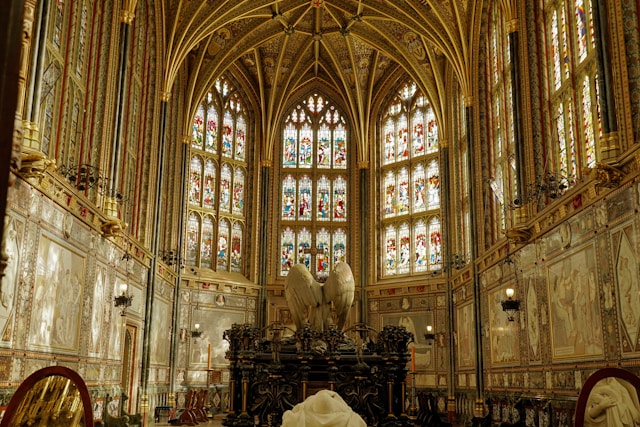
Discover the First Baptist Church of Glenarden: A Pillar of Faith and Community
In the heart of the vibrant township of Glenarden, Maryland, stands a beacon of spirituality and social impact—the First Baptist Church of Glenarden (FBCG). Established in 1872, this historic church has become an integral part of the community, offering spiritual guidance, outreach programs, and a sense of belonging to its diverse congregation.
Mission and Vision
FBCG’s mission is to “exalt Jesus Christ, equip believers, evangelize the lost, and engage in our community and the world.” Guided by its vision of “being a community of faith, hope, and love,” the church strives to create a welcoming and transformative environment for individuals seeking spiritual growth and connection.
Leadership
The church is led by the esteemed Pastor John K. Jenkins Sr., a renowned spiritual leader, author, and community advocate. Under his guidance, FBCG has grown into a thriving spiritual community, reaching thousands of worshippers every week.
Programs and Ministries
FBCG offers a wide range of programs and ministries designed to meet the spiritual, social, and educational needs of its members and the wider community. These include:
Worship Services
- Sunday services: 7:45 AM, 9:30 AM, and 11:15 AM
- Wednesday Bible study: 7:00 PM
Youth Ministries
- Sunday school classes for all ages
- Youth choir, dance team, and drama group
- Mission trips and service projects
Outreach Programs
- Community food pantry and clothing closet
- After-school programs for children and youth
- Health screenings and wellness fairs
Educational Initiatives
- Theology and leadership training courses
- Bible study groups and discipleship programs
- Partnership with Virginia University of Lynchburg for higher education
Impact on the Community
FBCG’s impact extends far beyond its walls, as it plays a vital role in the social and economic fabric of Glenarden and beyond. The church:
- Provides support and assistance to families in need
- Promotes community unity and dialogue
- Contributes to local economic development through its outreach programs
History and Legacy
The history of FBCG is one of resilience, growth, and unwavering faith. From its humble beginnings in a small log cabin to its current state-of-the-art campus, the church has been a constant source of inspiration and support for the Glenarden community.
Notable milestones in FBCG’s history include:
- 1872: The church is founded by a group of freed slaves
- 1923: The church’s first brick building is constructed
- 1971: Pastor John K. Jenkins Sr. is called to lead the church
- 1989: FBCG purchases the former Washington Redskins training facility
- 2002: The new FBCG campus, known as “The Sanctuary,” is dedicated
Visitor Information
Visitors are warmly welcomed at FBCG. The church offers a range of opportunities for guests to connect with the congregation and experience its vibrant atmosphere.
- Attend a worship service
- Join a Bible study group or Sunday school class
- Participate in a community outreach program
- Take a tour of the church campus
Conclusion
The First Baptist Church of Glenarden is more than just a house of worship; it is a beacon of hope, a catalyst for change, and a testament to the power of faith. Through its transformative programs, impactful outreach, and unwavering commitment to the community, FBCG continues to inspire and uplift generations in the pursuit of spiritual growth, social justice, and a better future.
Contact Information
First Baptist Church of Glenarden
3600 Brightseat Road
Glenarden, MD 20706
(301) 559-9200
www.fbcglenarden.org